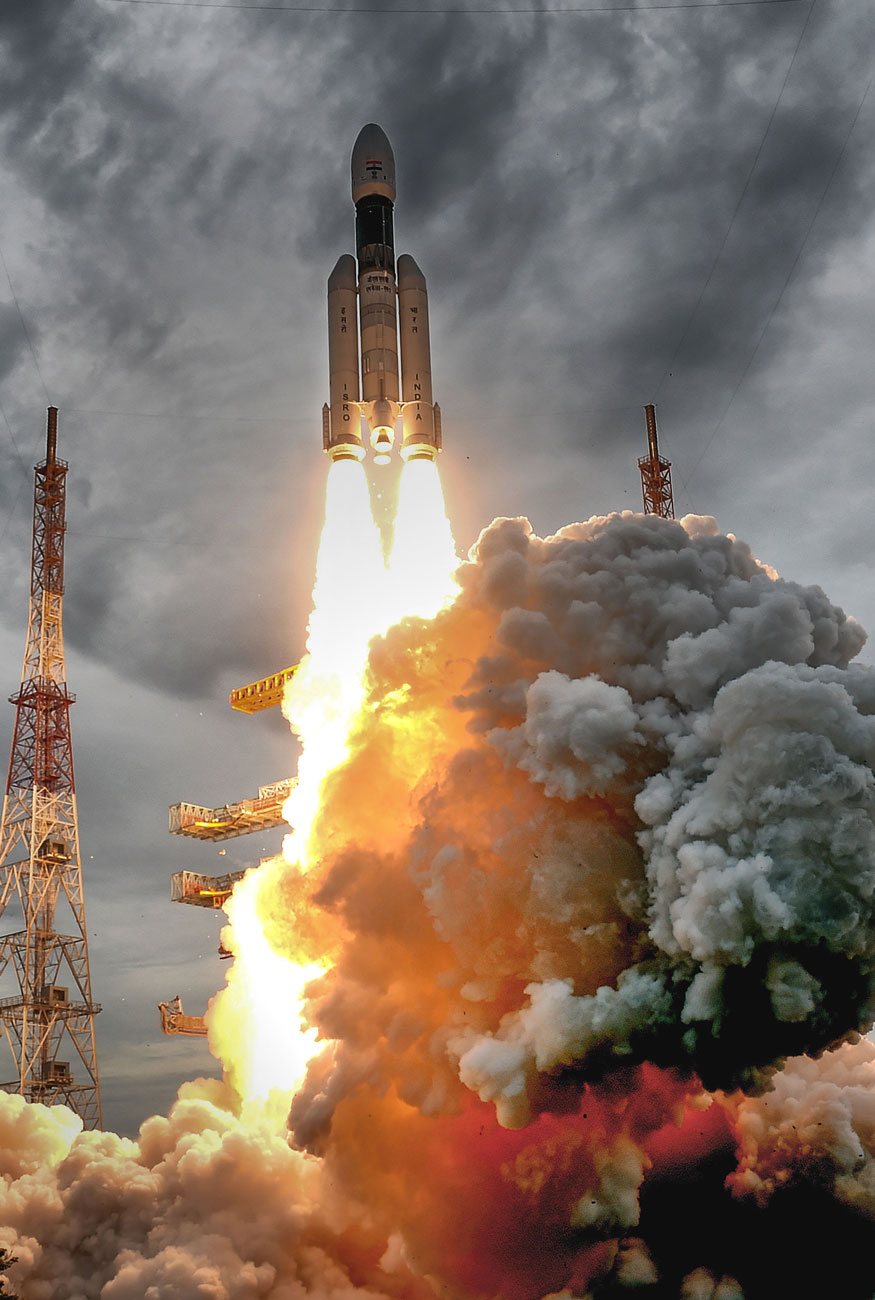The date is 22 July 2019. It is afternoon at the Satish Dhawan Space Center (SDSC) in Sriharikota. You look around and you notice something. That something is ISRO’s GSLV MkIII-M1 rocket, ready for a 2nd launch attempt after the initial one was postponed due to a technical snag. The nation holds its breath and counts down along with Mission Control. T-3, T-2, T-1, T-0. The engines roar to life. India, along with the whole world, watches in awe as ISRO’s rocket majestically rises from the earth’s surface, gaining velocity with each passing second. A mission termed by many as ‘ambitious’ is finally underway.

Let’s fast forward to September. India has been closely following the moon mission for months, celebrating the successful completion of one stage after another. After several orbit-raising maneuvers, insertion of the spacecraft into the lunar orbit, and several de-orbiting maneuvers, Chandrayaan-2 is finally circling the moon. ISRO’s Chandrayaan-2 spacecraft consists of 3 major parts – an orbiter, a lander, and a moon rover.

It is now the 7th of September, past midnight. Yet, the entire nation is awake, eagerly waiting for good news. At the Mission Control Centre in Bengaluru, ISRO scientists, students, reporters, and Prime Minister Modi himself wait in anticipation. The final nerve-wracking 15 minutes begin. At around 1:30 am IST, the Vikram lander detaches from the orbiter and begins its ‘autonomous powered descent’ to the lunar surface.
Everything since the launch in July has gone according to plan. Since there is a time-lag for the exchange of signals between the Earth and the Moon, the entire landing procedure is controlled by Vikram’s onboard computer. Travelling at a speed of 6000 kmph at an altitude of 30 km, Vikram starts to slow down and lower itself towards the surface for a soft-landing.
The target landing site is near the lunar South Pole, an area that has remained unexplored by past moon missions. At an altitude of 2.1 km above the surface, in the last stage of the landing, Mission Control suddenly loses communications with Vikram. ISRO and the millions of Indians watching the landing are distraught.

Over the past few days, social media has been flooded with support for ISRO, who worked tirelessly for years to make this mission a success. Thanks to their dedication, they have inspired millions of Indians, especially young minds, who are now dreaming of becoming scientists, astronauts, and explorers. Despite having limited resources, ISRO has accomplished what few space agencies over the world have done. Consider Chandrayaan-2’s total budget of 141 million USD. To get an idea of what this figure means, hear this. Avengers Endgame was made with a budget of 356 million USD.
India displayed full support to ISRO and acknowledged its mind-boggling achievements. Chandrayaan-2 is by no means a failure, as the majority of the experimentation and analysis will be carried out by the instruments on the orbiter, which is still functioning properly. ISRO chief K. Sivan announced that they would search the lunar surface for the Vikram lander for the next 14 days using the orbiter.
On the afternoon of 8 September, in a major revelation, ISRO announced that they had located the Vikram lander on the moon’s surface, around half a kilometer away from the planned landing site. The orbiter managed to capture a thermal image of the lander using infrared cameras. Although ISRO found the lander, they were unable to re-establish communication with it.

K. Sivan emphasized on Sunday afternoon that they would continue attempts to connect with the lander and determine its exact status using the other instruments aboard the orbiter. There is still hope that the lander is in working condition. Until we get further updates, all of India will wait, with its fingers crossed, for good news.
SUMANT S. DANGI
Junior Editor, Renesa
This article was originally written for and published on Renesa – The Official Media and Publication House of NIT Surat. It was originally titled “Chandrayaan-2: Vikram Lander Snag”.

